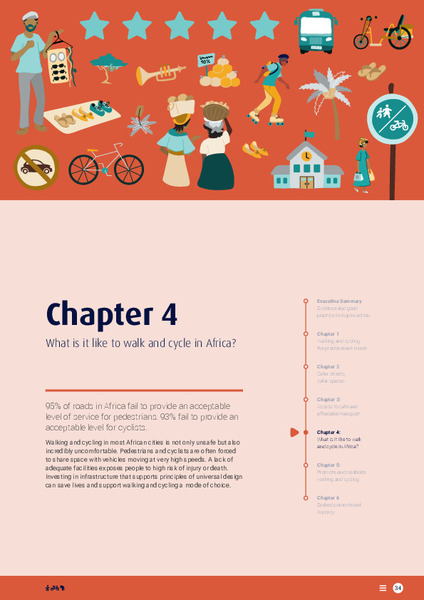| dc.contributor | Economy Division | en_US |
| dc.contributor.author | United Nations Environment Programme | en_US |
| dc.contributor.author | United Nations Human Settlements Programme | en_US |
| dc.contributor.other | WALK21 | en_US |
| dc.coverage.spatial | Africa | en_US |
| dc.date.accessioned | 2022-05-31T08:27:02Z | |
| dc.date.available | 2022-05-31T08:27:02Z | |
| dc.date.issued | 2022-06 | |
| dc.identifier.uri | https://wedocs.unep.org/20.500.11822/40075 | |
| dc.description | Walking and cycling in most African cities is not only unsafe but also incredibly uncomfortable. Pedestrians and cyclists are often forced to share space with vehicles moving at very high speeds. A lack of adequate facilities exposes people to high risk of injury or death. Investing in infrastructure that supports principles of universal design can save lives and support walking and cycling a mode of choice. | en_US |
| dc.format | Text | en_US |
| dc.language | English | en_US |
| dc.relation | Walking and Cycling in Africa: Evidence and Good Practice to Inspire Action | en_US |
| dc.relation.ispartof | Walking and Cycling in Africa: Evidence and Good Practice to Inspire Action | en_US |
| dc.rights | Public | en_US |
| dc.subject | sustainable transport | en_US |
| dc.subject | walking | en_US |
| dc.subject | cycling | en_US |
| dc.subject | Africa | en_US |
| dc.title | Chapter 4. What Is It Like to Walk and Cycle in Africa? | en_US |
| wd.topics | Climate Action | en_US |


